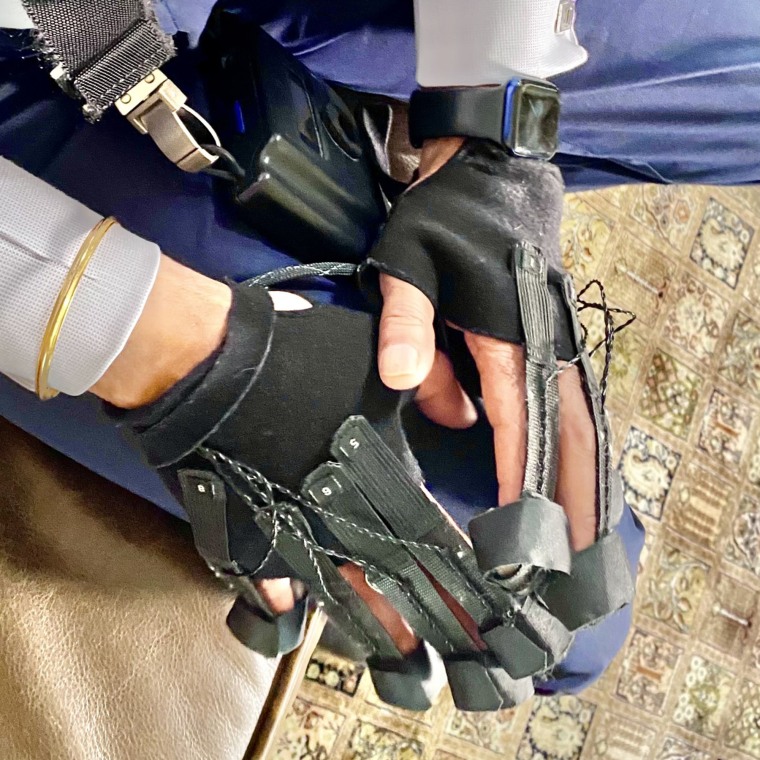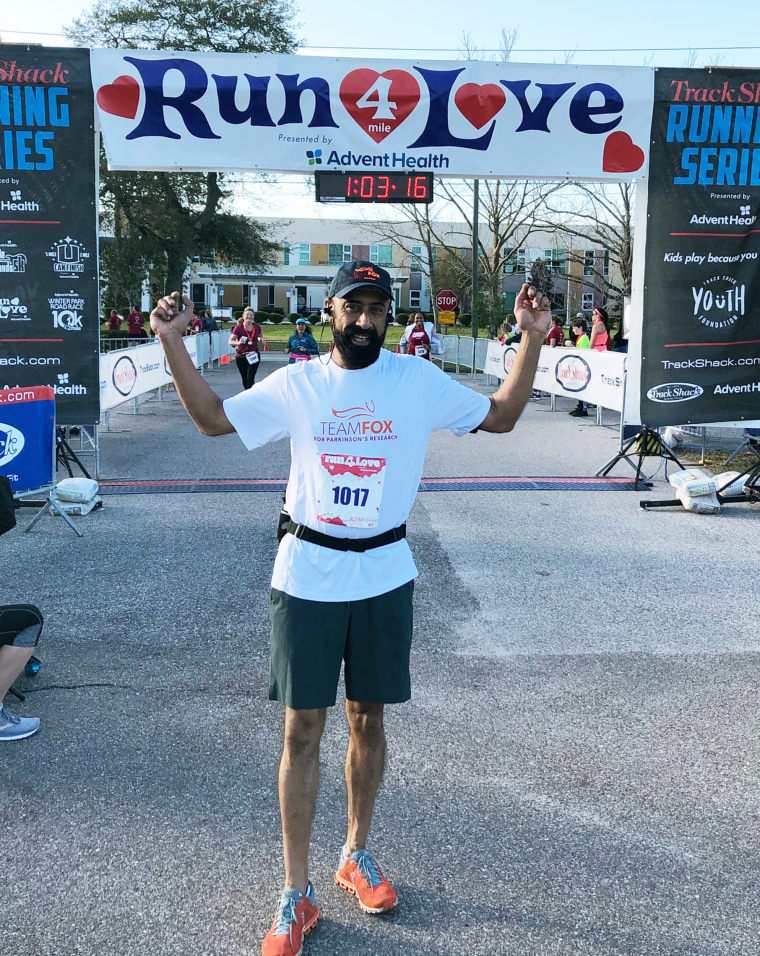When Kanwar Bhutani first came to try out an experimental treatment using vibrating gloves, his Parkinson's symptoms were so severe that he had trouble taking steps on his own.
Bhutani, now 58, who was diagnosed at 39, noticed a significant difference after just one four-hour session wearing the gloves, he told NBC News correspondent Jacob Soboroff in a Dec. 13 segment on the TODAY show.
The new technique, developed by researchers at Stanford University, consists of wearing gloves that deliver a pattern of vibrations. These vibrations may help reset nerves that misfire in Parkinson’s disease, thereby allowing the patient to relearn normal movements, Stanford Medicine Magazine explained.

About 500,000 people in the U.S. are living with Parkinson's disease, a neurological condition where the patient struggles to control their movements, which can cause shaking, stiffness, balance problems and difficulty walking or talking, according to the National Institute on Aging.
It most commonly affects people over 60, but up to 10% of patients start symptoms before 50. There's currently no cure for Parkinson's disease. Standard treatments to minimize symptoms include medications, deep brain stimulation through surgery and physical or occupational therapy.
That vibration may help reduce Parkinson's disease symptoms is surprisingly old theory, said Dr. Peter Tass, professor of neurosurgery at Stanford and the man behind the gloves.
In fact, after noticing that his Parkinson's patients’ symptoms subsided following a long, bumpy train journey to his office, neurologist Jean-Martin Charcot developed a vibrating chair in the 19th century. From there, other researchers created vibrating therapies and platforms over the years with inconclusive results.
Now, Tass and his team are revisiting and refining the idea with the gloves. Bhutani is just one of 20 patients in the first round of clinical trials — and he's not the only one who's seen remarkable effects. Other patients who, at first, found it difficult to walk have gone on to participate in CrossFit and perform dances following treatment with the gloves. All 20 have experienced some improvement.
Tass said his goal is not just to improve patients' lives but also to do so without the need for dozens of medications or invasive brain surgery. Bhutani said he’s been able to reduce the number of medications he needs to take from 25 to just two.
"I'd like to come up with treatments that are way less aggressive, but nevertheless really effective," Tass said on TODAY.
Thousands of people have already applied to take part in the next Stanford Medicine trial. And Tass told TODAY that he hopes the gloves will be approved by the Food and Drug Administration and available for patients in about two years.

For Bhutani, the gloves have been life-changing. He went from relying on a wheelchair to finish the New York City Marathon just three months after his first treatment. He's since run multiple 5Ks and competed in his first triathlon. Bhutani added that his day-to-day mobility has also improved significantly, calling it "perfect."
"I still can't believe to this day that this is really possible," Bhutani added. "It's totally changed my life, transformed me."
Anyone interested in participating in the trial can visit the Tass Lab website or email parkinsonsvcr@stanford.edu.
